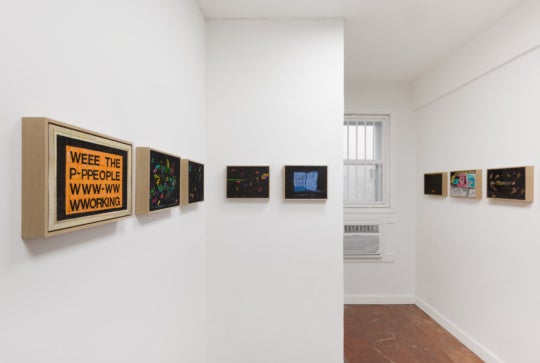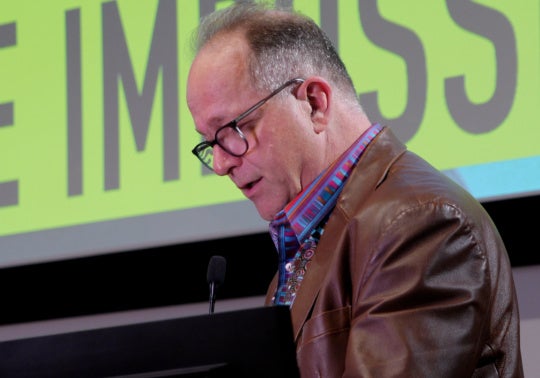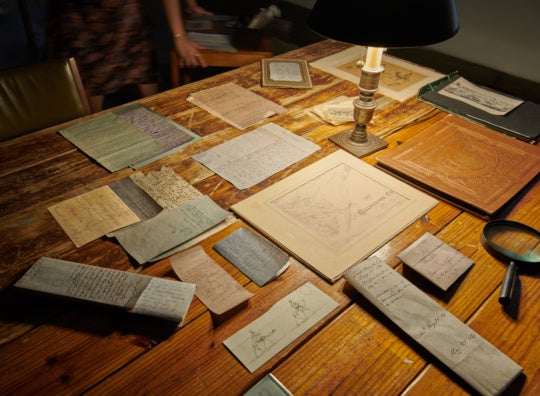
When John Fields and Nicole Danko decided to make a film about five high school students at Holy Family Christo Rey High School in Ensley, Alabama, all they knew was that they wanted the film to be positive. Now working on the film in its editing stages, John Fields shares some of the challenges, complexities, and opportunities presented by After the Dream.
Brett Levine: Can you tell me a little about how and why you and your co-producer, Nicole Danko, chose to make a film about the students at Holy Family Christo Rey?
John Fields: Ensley, Alabama, is a really challenging place. Birmingham is, in the words of one of the film’s participants, a place where the civil rights movement died an early death, and its corpse was thrown across the street. Ensley, Alabama, was a city built for the needs of the steel industry. It was originally filled with multicultural neighborhoods of often Catholic immigrants—Italian, Polish—people who wanted their children to be educated in Catholic schools. As the industries and economics of Birmingham changed, the people who could afford to leave usually did. Now, Holy Family is a private school that in many ways provides the one opportunity many of these kids have. In a city where the public school system is often regarded as failing, and in a community that is disproportionally represented in both the poverty and crime statistics, we felt like there was a unique story to tell.

BL: Did you have a particular relationship with the school?
JF: My co-producer Nicole Danko actually does. Her husband was a teacher at the school when the project started, and Nicole has also taught there. When Nicole first suggested the idea, I asked her to meet with Michele Forman—Michele has produced films for Spike Lee and directed the documentary film program at UAB. I thought there was a story, but I’d only made short documentaries before. Michele loved the idea and came on board as our executive producer. She also introduced us to Alex Lanier, who is our third producer and a key member of the film’s team.
BL: What about the makeup of the crew? Was there any diversity?
JF: No, and that was something we talked about. We knew that in a school which is basically entirely African American it might be difficult for a couple of 30-something white people with a camera to come in and start to film. But what happened was something else. It took a while for us to build trust – and in many ways that is something that is still happening – but in the early stages we had to let them know that we weren’t going to make fun of them, or make them look stupid. We wanted them to know we were genuinely interested in their stories and we wanted to portray them in a positive light. That was really our approach to the entire project. You have to understand that, really for a lot of these kids, this really is the only way out.
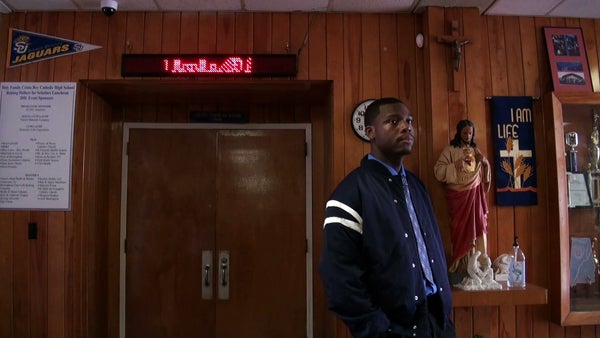
BL: Was it difficult to get the students to participate?
JF: Well, first, we weren’t sure how amenable the school would be, but [members of the administration were] excited by the idea and were really generous with their time and with allowing us access. Part of the paperwork that the students or their parents signed for the year was a blanket photo release. We had permission to film everyone in the school, and that simply made the process much easier. The students weren’t [uninterested], they just weren’t really sure what the whole movie experience was about. I think some of the students who we followed—and you have to understand that we’ve really spent a year and a half filming these kids—some of them initially didn’t really understand what a documentary was or what we were doing. They thought this would be a way to get famous, something like an MTV reality show, and we had to keep explaining that it wasn’t like that. We had to explain that this was a project we were [working] on with the hope that something would happen—we were doing it the way they always say you shouldn’t! We were doing the movie, and then hoping to sell it.
BL: Did your five subjects remain committed to the film?
JF: Sort of. What we didn’t know when we started was how much the story arcs would change. We knew [all the subjects] would have their own [arcs], they each have their own stories to tell, but we didn’t realize until we were in the initial stages of editing that there were other questions we wanted to ask. So now, if we go back to them, some of them don’t want to participate anymore. It’s like they’ve moved on. As part of the trust-building process we really inserted ourselves in these people’s lives, and their families’ lives, if they would let us. We knew from the outset that the story wasn’t really about the school but that the school provided the framework for us to tell [students’] stories. We also learned really quickly that when we were in or around the school it was a completely different experience than when we were with them at their houses or out in the community.
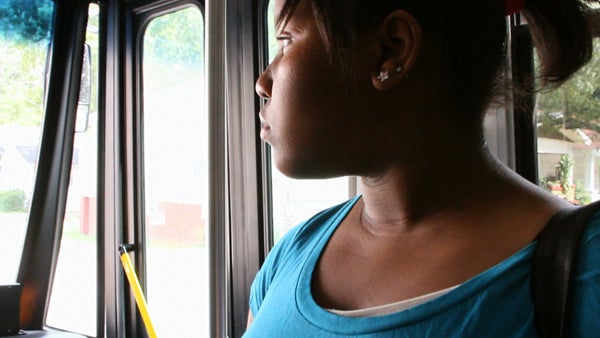
BL: What impact was the school having on the students? How was it different from their [public] school experiences?
JF: First, since it is a private school, everyone works one day per week, often for a company that mentors [students] and that provides them with a scholarship to attend. Second, Holy Family has been really successful with helping their students to graduate. As one of the teachers says, they really do have to pack a lot of learning into a short period of time. What’s so unusual is that the culture at the school is one that most of these students never had before. One of the students in the film had a really terrible experience in public school. He was being bullied because he was smart. It got to the point where he wasn’t doing his homework and he was performing poorly on tests simply to avoid getting beaten up. So when he comes to Holy Family, he gets surrounded by people who expect him to succeed. There the students tease each other for not doing their homework, or not doing well.
BL: You’ve completed the trailer and are now working with an editor. When do you expect the film to be finished?
JF: We imagine the first edited cut—we did an initial rough that took the 120 hours of film and reduced them to three—will be ready by the end of [2013]. We believe the final film will be about an hour. Really, if we were to begin filming today I think we would have been better at getting the students to engage with the process more quickly. We spent a lot of time talking with them, recording, letting the story tell itself.
BL: What relationship will the film have with the school after the students graduate?
JF: When we finished the trailer we took it to the school, and they screened it for the entire student body. Although [the students’] response was positive, they also had a sense of disbelief. They couldn’t fathom the idea that someone cared enough to make a film about them. It’s impossible to know what they will think when it is completed, but at least they know something is happening. They were so honest with us, and usually without us [having to ask] directly, that we wanted to show them that it was worthwhile.
BL: Is there anything else you’d like to share about the film?
JF: There are two elements of the film that we haven’t really discussed. One … we can’t stress enough is that, despite our positive approach, the school is always hanging by a thread. It is a beacon of hope in a place that history shows us is very unlikely to ever improve. We also understand that despite our desire to make the film positive, many of the kids are barely keeping their heads above water, and that of course puts the school, and its mission, in jeopardy. Making a documentary film is an amazing process, especially when you are working with people who don’t have its language as a part of their film experience. In that context we’re grateful to have made the film at all. We’re optimistic that our subjects will feel like the film is a true reflection of what they shared with us. We also hope the film draws attention to the work the school does in Ensley and helps to secure donations in the future. As a production team we are setting up a scholarship fund at Holy Family and are contributing [to it] a portion of any money the film may make.

Brett Levine is an independent writer and curator. He has worked nationally and internationally, holding positions at the University of Alabama at Birmingham, Lopdell House Gallery, and the Dowse Art Museum. His writings have appeared in Art Papers, Object, Urbis, Art New Zealand and B-Metro. He lives and works in Birmingham, Alabama.

